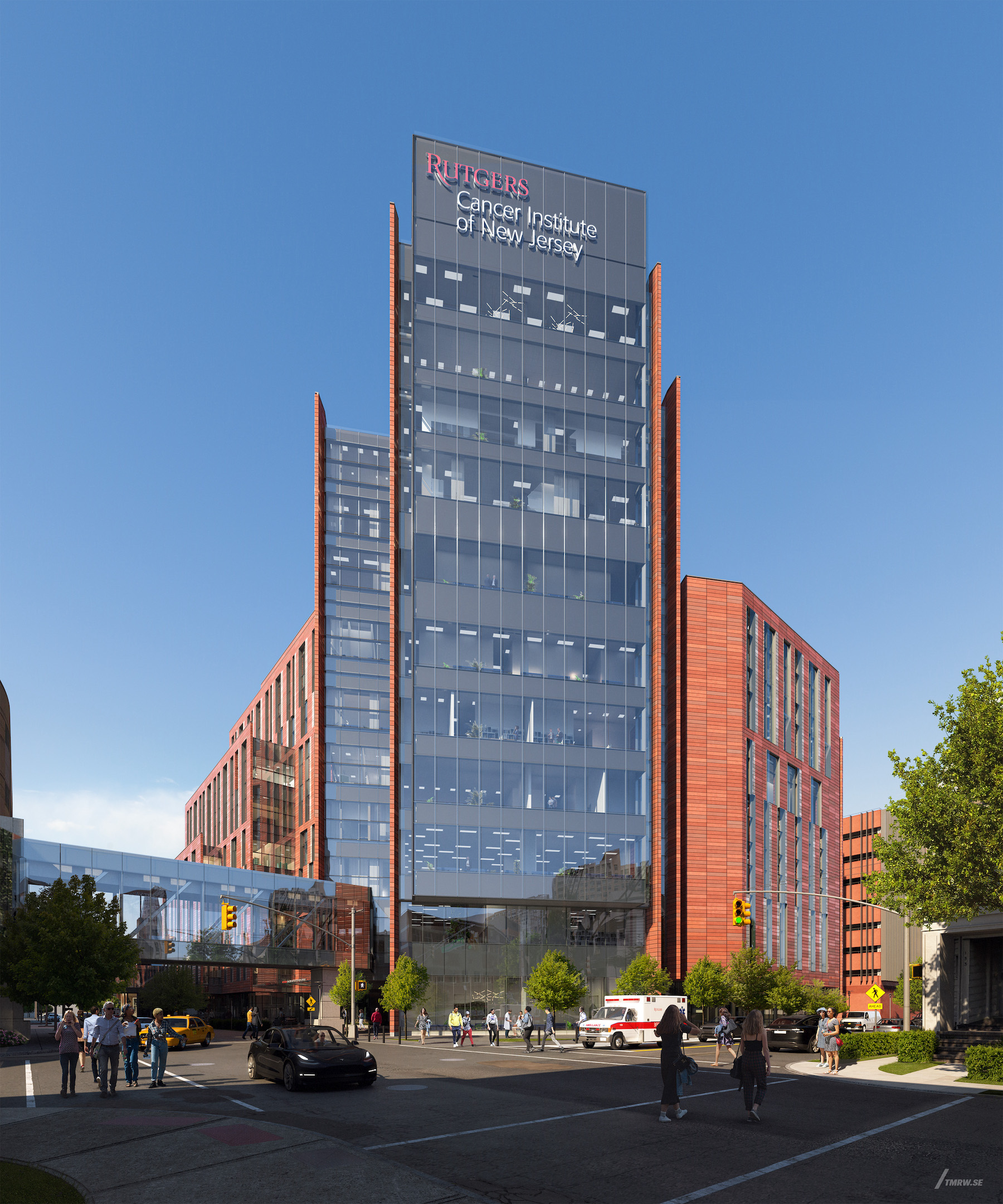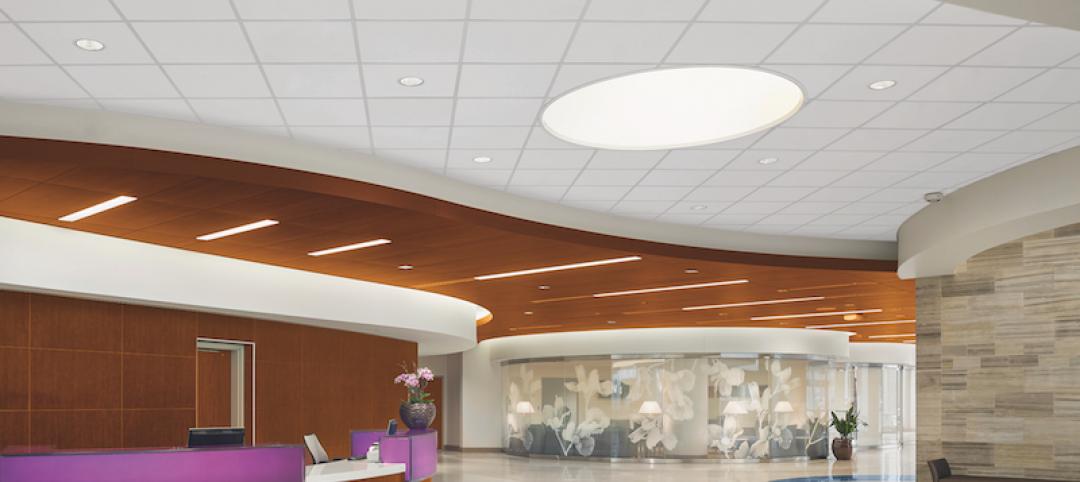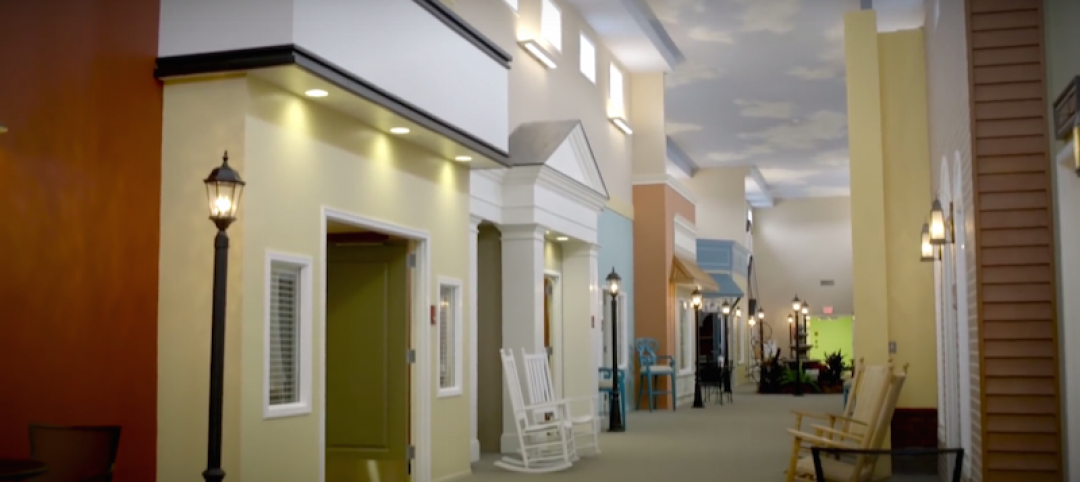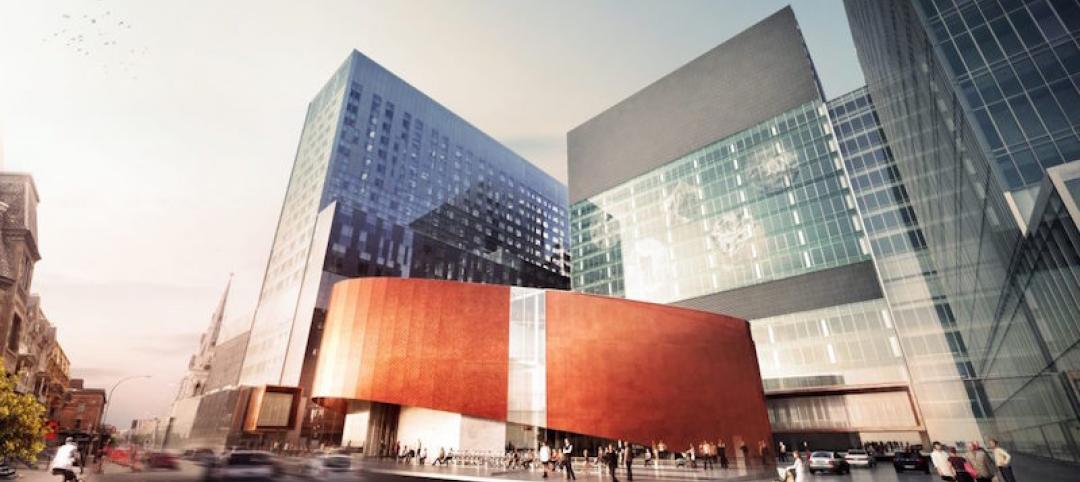Early next year, the New Brunswick (N.J.) Development Corporation, in collaboration with RWJBarnabas Health and the Rutgers Cancer Institute, is scheduled to open the Jack & Sheryl Morris Cancer Center, which will be the Garden State’s first National Cancer Institute-designated Comprehensive Cancer Center.
This 12-story, 520,000-sf, $750 million project, which broke ground in June 2021 and topped off in November 2022, will be a freestanding building that combines in- and outpatient services with research. A skywalk will connect the Cancer Center to the existing Rutgers Cancer Institute of New Jersey and the Robert Wood Johnson University Hospital.
The new building will include 96 inpatient beds on three floors, with one entire floor for surgical services. There will also be 84 infusion bays, 74 exam rooms, and state-of-the-art imaging and diagnostic equipment that includes four linear accelerators. The Cancer Center will offer in- and outpatient radiation oncology services.
More than 100 scientists will have access to 10 research labs within the Cancer Center.
The Cancer Center will be integrated into RWJBarnabas’ “Navigator” program, which allows patients to take a more active part in managing their treatment and longer-term healthcare.
The Building Team for the Cancer Center includes HOK (architect and designer), a joint venture between Jingoli Construction and LF Driscoll (GC), and O’Donnell & Naccarato (SE). As part of this project, RWJBarnabas picked up the $55 million tab to build Blanquita B. Valenti Community School, a three-story elementary school for 800 students that opened last September. Jack Morris, the Cancer Center’s benefactor and namesake, is the founding chairman of RWJBarnabas Health, and with his wife leads Edgewood Properties, a property development and management firm.
An innovation hub in the city’s core

The Morris Cancer Center isn’t the only project that’s positioned to reshape New Brunswick’s reputation, urban landscape, and economy, at a time when this city of 56,400 is only growing marginally and has struggled to maintain its jobs base. After years of languishing as a massive excavation hole, The Health and Life Science Exchange (HELIX NJ), a four-acre innovation district which was co-developed by SJP Properties and the New Brunswick Development Corporation, finally began construction last July and is scheduled to start opening next year.
HELIX’s $650 million first phase, a 13-story 573,400-sf building, will house an Innovation HUB, Rutgers Robert Wood Johnson Medical School (on four floors), and a research facility, as well as retail space, a 10,000-sf market hall, and a 3,000-sf restaurant that opens onto a 70-ft-wide plaza.
Rutgers University, which will occupy three-quarters of HELIX’s first building, has committed $270 million to recruit and retain 80 translational research investigators to work in HELIX.
HELIX’s $731 million second phase, designed by HDR, will include 600,000 sf of built-to-suit office and lab space. (Last month, Nokia announced plans to move Nokia Bell Labs into HELIX.) Phase 3 will be a mixed-use 42-story building with 220 housing units. Jingoli Construction is HELIX’s general contractor.
HELIX was the first program approved under the New Jersey Economic Development Authority's Aspire tax credit program, which was created by legislation passed in 2020.
Related Stories
Sponsored | Healthcare Facilities | Oct 26, 2016
Rx for noise control at Virginia hospital: Large dose of acoustical ceilings
A myriad of acoustical ceiling solutions aid in patient comfort and recuperation.
Sponsored | Healthcare Facilities | Oct 24, 2016
Cyclotron streamlines isotope production
The 70 MeV, 140-ton cyclotron was manufactured by Ion Beam Applications (IBA) in Belgium.
Industry Research | Oct 20, 2016
New book from HDR explores opportunities for how healthcare organizations can reinvent the patient experience
Delta offers a close look at specific activities and behaviors that can help healthcare providers and caregivers discover revolutionary concepts to help them embrace and thrive in the rapid change that surrounds them.
Lighting | Oct 6, 2016
Healthcare systems lighting their way to savings
There has been a rapid improvement and availability of LED products as primary light sources in most healthcare facility applications.
Healthcare Facilities | Sep 28, 2016
Assisted living facility resembles a quaint American neighborhood
The design is not just meant to be aesthetically pleasing, but can also help patients with dementia and Alzheimer’s.
Healthcare Facilities | Sep 16, 2016
Healthcare architect turned patient: What I learned when admitted to a facility I helped design
Discovering new ways design can—and can’t—improve the patient experience.
Healthcare Facilities | Sep 14, 2016
Details of the largest healthcare construction project in North America revealed by CannonDesign and NEUF architect(e)s
The project will combine three aging hospitals into one complex.
Healthcare Facilities | Sep 7, 2016
The merger of physical healthcare and digital care: Why is it important?
As healthcare costs continue to increase, operators are exploring new delivery models and social platforms to personalize the provision of healthcare services. These companies are pouring resources into this field to create more personalized, secure, and affordable health and wellness options.
Healthcare Facilities | Sep 6, 2016
Chicago Faucets releases white paper: Reducing the risk of HAIs in healthcare facilities
The white paper discusses in detail four options used to mitigate transmission of waterborne bacteria
Healthcare Facilities | Aug 30, 2016
The Program of All-Inclusive Care for the Elderly is making large strides
A typical PACE center is comprised of a fully functioning and equipped primary care clinic, adult day center and rehabilitation therapy gym.

















